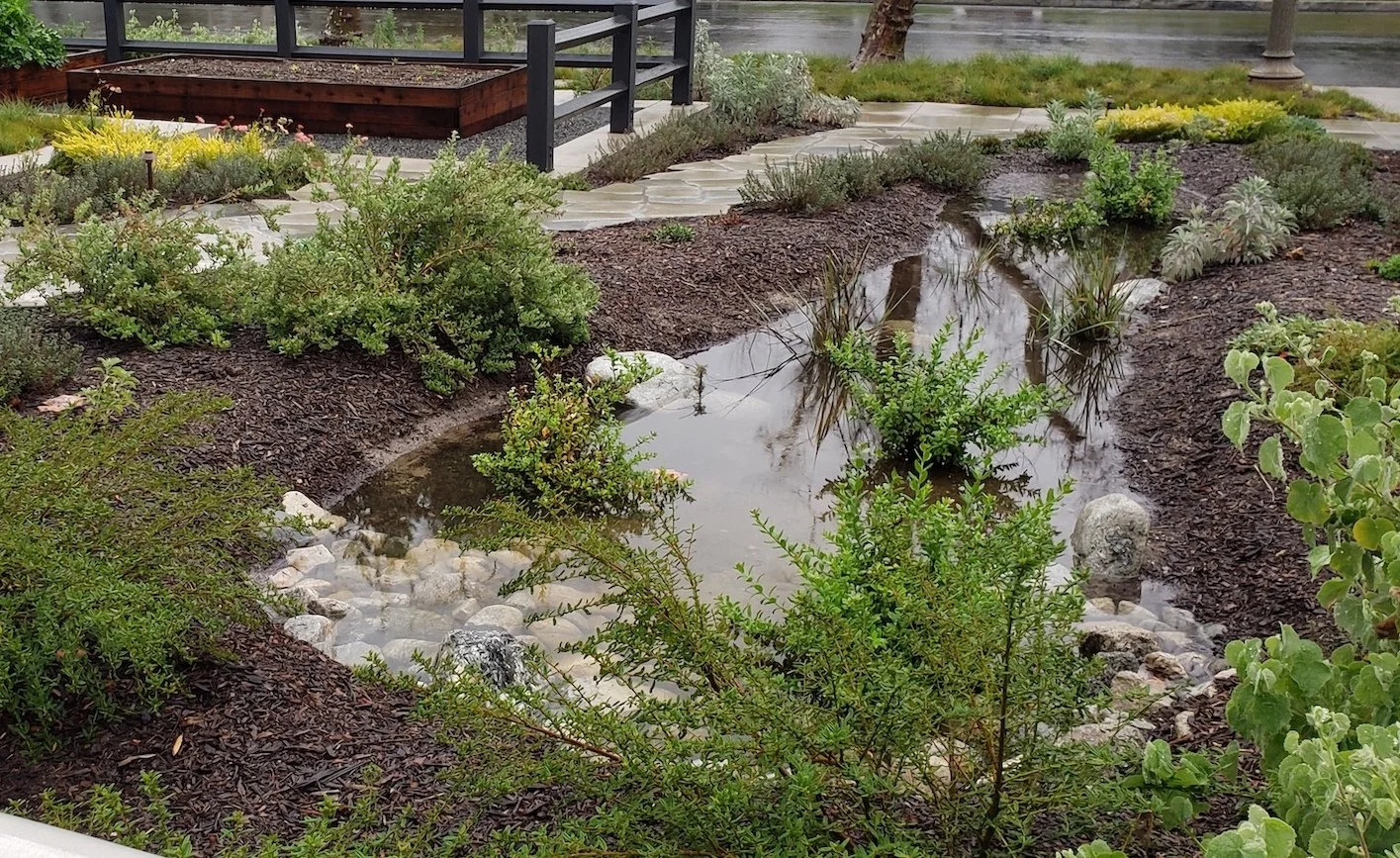CAPTURING/INFILTRATING/CLEANING WATER ON A GREEN SCHOOLYARD
Most LAUSD schools are covered in hard asphalt, causing rainwater to run off into storm drains, eventually flowing out to the ocean. LAUSD spans over 6,400 acres, resulting in the loss of tens of millions of gallons of water each year during rain events. In contrast, when the ground is covered with natural materials and features a high density of plants, rainwater is slowed, filtered, and absorbed into the soil. This local retention helps recharge groundwater supplies, which provide one-third of Angelenos' drinking water. By removing asphalt, planting trees, and installing stormwater infrastructure, a single schoolyard can contribute to the County becoming more resilient during drought years.
See if your school is eligible for Safe Clean Water funding to green your schoolyard.
Stormwater Capture Infrastructure Options in Detail
The options for capturing stormwater are largely determined by how water flows on the school site, available open space, and budget.
Bioswales and rain gardens are both depressions in the ground that are designed to slow down rainwater. However, a bioswale achieves this through a curving or linear path, while rain gardens are designed to capture, store, and infiltrate rainwater in a bowl shape. A bioswale or rain garden captures runoff by slowly filtering it through the roots of native plants, where the majority of pollutants are removed. The water enters a secondary filtration level usually made of sand, gravel, or rock. Reference
A bioswale
A rain garden
Cisterns are large tanks that store rainwater collected from impervious surfaces, such as a roof, for domestic uses or for consumption. An obivous benefit provided by cisterns is an additional supply of water. Instead of rainwater being routed away quickly, it is retained for later use. Reference
Permeable pavement is a porous urban surface that catches precipitation and surface runoff, storing it in the reservoir while slowly allowing it to infiltrate into the soil below or discharge via a drain tile. The most common uses of permeable pavement are parking lots, low-traffic roads, sidewalks, and driveways. Reference
Resources
Guidebooks
Green Infrastructure for Schools Guidebook, Milwaukee Metropolitan Sewerage District, 2017
Storm Smart Schools: A Guide to Integrate Green Stormwater Infrastructure to Meet Regulatory
Compliance and Promote Environmental Literacy, EPA 2017
Funding





